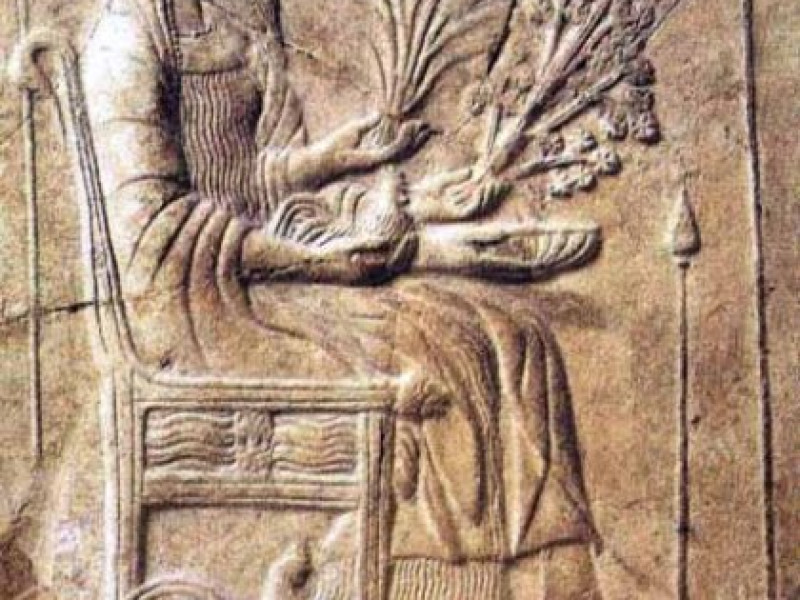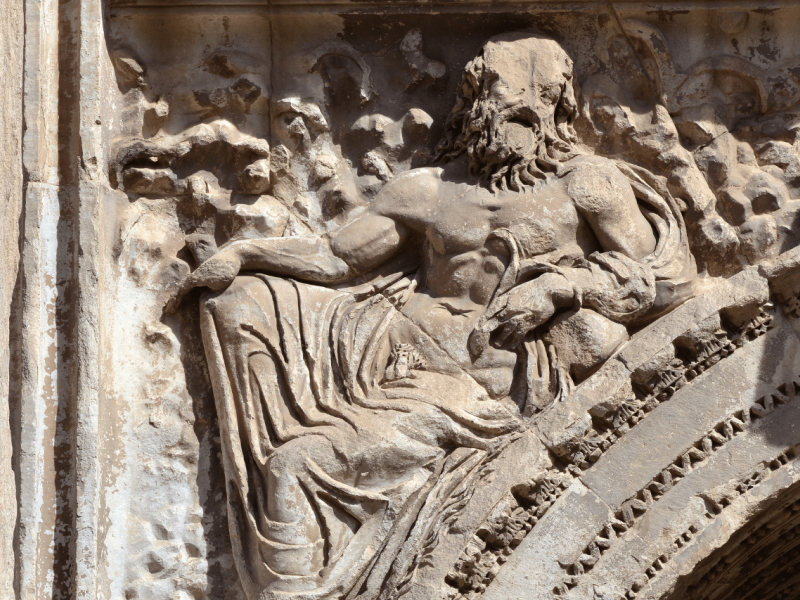Underworld
The world of the dead or the netherworld was commonly viewed by the ancient religions to be a subterranean realm ruled by a god, a goddess, or both. Almost all mortals would reside in the netherworld after their death. Few gained godhood and fewer still gained places on Olympus, the home of the Olympian gods and goddesses.
For people who read about the afterlife in Greek mythology, you must ignore the Christian and Islamic concepts of heaven and hell scenarios that are so common in medieval and modern religions. For the Greeks and Romans, death was inevitable and all men were allotted to their fates, and all were given places in the Netherworld.
In Greek mythology, the rulers of the Underworld were Hades and Persephone, which the Romans called Pluto (or Dis Pater) and Prosperina.
In classical mythology, the world of the dead or the netherworld had many different names. The ruler of the Underworld was named Hades, and the netherworld itself was also popularly called Hades.
The domain of Hades had many different names such as Underworld, Hades, House of Hades, Erebus, Tartarus, Elysium and the Isles of the Blessed. Hades was a popular name and it was often used interchangeably with the Underworld for the entire subterranean realm.
Hades (Underworld) was named after its ruler Hades, who was the son of Cronus and Rhea, and brother of Zeus, Poseidon, Hera, Demeter and Hestia. Hades was known in the Roman myths as Pluto. His wife and consort was Persephone or Prosperina (Prosperine) according to the Roman myths.
After the war between the Titans and the Olympians, Hades and his two brothers decided to divide the universe between them. Zeus received the sky or Olympus, Poseidon became lord of the sea, while Hades ruled the Underworld. The Earth was shared by all, but Zeus became the supreme ruler of the universe.
See Hades under Deities of the Netherworld section for more detail about the god of the dead.
As I have said, the Underworld was the subterranean domain of Hades where the sunlight never shined and the climate was either cold or chilling. The entire domain was divided into several regions, and had several different types of landmarks.
Hades (Underworld) could also refer to Hades' residential palace, which was called the House of Hades, where he lived with Persephone. His palace seemed to be separate from other parts of his realm.
There were five subterranean rivers flowing through the Underworld. They were called Acheron ("Woe"), Cocytus ("Wailing"), Lethe ("Forgetfulness"), Phlegethon or Pyriphlegethon ("Fiery"), and Styx ("Abhorrence"). The shades had to cross all five rivers before they could be judged and sent to their final resting place.
The river Styx was named after the river-goddess Styx, the eldest daughter of Oceanus and Tethys. Charon ferried the shades across the river Acheron or Styx for a fare of one coin (obol). Those few mortals who ventured into Hades were also required to pay a toll to the ferryman. Only the singer Orpheus didn't pay for a toll, because his music from his lyre had charmed Charon. However, Charon barred Orpheus from entering the Underworld a second time. In The Aeneid, Charon wanted to refuse passage for the hero Aeneas and the prophetess Sibyl, until she revealed the sacred Golden Bough.
The Stygian water of Styx seemed to burst from Mount Aroanius, in Arcadia. Any oath sworn by the name of Styx was the most sacred of oaths to the gods.
The Underworld was divided into two or more main regions. Erebus was the upper region, while Tartarus was the lowest region, where most of the Titans were imprisoned.
There were three minor gods in the Underworld who acted as judges and presided over the souls of the dead. These three were Minos and Rhadamanthys, sons of Europa, and Aeacus, the son of Aegina.
Most mortals who died would find their final resting place in the Plain of Asphodel, which was part of the Erebus region. The shades who dwelled here had no memories of their former lives. The place was gray and gloomy, but the shades who populated this region would experience neither joy nor sorrow. Only a few mortals would ever gain entry to the Elysian Fields. The Elysian Fields was also part of the region of Erebus. See Elysian Fields for more description.
Others, who led a wicked life, were sent down to Tartarus and punished for their crime or sin. Among the notable figures to be punished in Tartarus were Tityus, Ixion, Sisyphus and Tantalus.
Both Erebus and Tartarus were said to be the primordial gods who became personifications of these two regions. Erebus (Darkness) was the son of Nyx (Night) and perhaps of Chaos. Tartarus was born or came into existence at the same time as Gaea or Ge (Earth) and Eros (Love).
See Erebus and Tartarus in the Ancient Deities for these two personifications; and in the next article on the region of Tartarus.
There were many deities who lived in the Underworld apart from Hades and Persephone, such as Styx, Hecate, and the brothers Hypnos (Sleep) and Thanatos (Death). You will find all these Underworld deities in Deities of the Netherworld.
The Roman myths about the Underworld were no different from that of the Greeks, except the deities had Roman names instead of Greek.
Only a few people had bravely or foolishly entered the infernal realm while they were still alive.
Theseus and his rash companion Peirithous went to the Underworld with the intention of abducting Persephone, wife of Hades. Heracles, who was performing one of his famous labours to fetch Cerberus, Hades' hound, managed to free Theseus from the Chair of Forgetfulness. Heracles entered the Underworld through Alcyonian Lake, near Lerna, Argolis, as did Dionysus.
Orpheus, on the other hand, sought entry at Cape Taenarum, in southern Peloponnesus. Orpheus, the famous singer/bard, tried to bring his wife Eurydice to life, but failed because he had broken the condition Hades had set upon him.
Psyche was the only woman I know of who entered the Netherworld and returned back to the surface. She had to perform an errand for Venus (Aphrodite), mother of Cupid (Eros), to fetch a cosmetic box from Persephone. She almost died in this undertaking.
Odysseus only went to the Underworld to receive counsel from the dead Theban seer Teiresias, but he also met other shades. Odysseus was given specific instructions on how to enter the Underworld. Unlike others who dared to venture into the land of the dead, Odysseus sailed his ship to the stream Oceanus until the ship reached the grove of Persephone, a grove of poplars and willows.
Similarly, the Trojan hero Aeneas visited his father Anchises for advice. Both of these heroes weren't required to enter the very depth of the Netherworld. The entry to the Underworld was at Avernus, a lake near Naples. The Sibyl instructed Aeneas to fetch the Golden Bough, which allowed Aeneas safe passage through the netherworld. The bough was sacred to Persephone/Prosperine.
The beautiful youth Adonis spent a third of his life in the Underworld with Persephone, while the other two-thirds was spent on the surface with Aphrodite, because the two goddesses were in love with him. But when he died during hunting, he had to spend the rest of his afterlife in the Underworld.
Sisyphus was more successful in coming back to life because the wily king had duped Hades into sending him back. However, when Sisyphus eventually died in his old age, he was punished by the gods and had to toil endlessly, rolling a large boulder to the top of the hill.
Related Information
Name
Underworld, Hades.
Regions of the Underworld
Erebus.
Tartarus.
Plain of Asphodel, Asphodel Fields.
Elysium, Elysian Fields, Isle of Blessed, Blessed Isles, White Island.
Rivers of the Underworld
Acheron ("Woe")
Cocytus ("Wailing")
Lethe ("Forgetfulness")
Phlegethon or Pyriphlegethon ("Fiery")
Styx ("Abhorrence").
Related Articles
By Jimmy Joe






